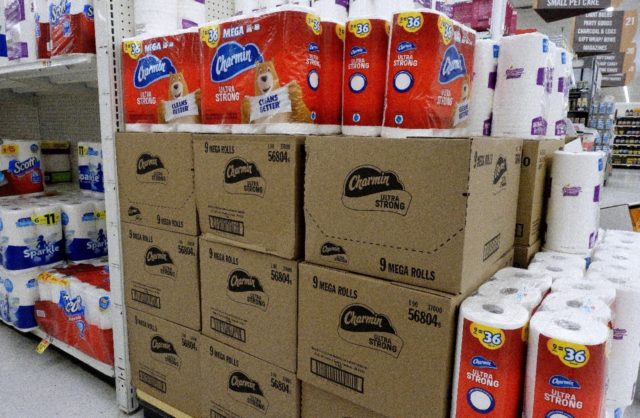More air in that bag of chips? Fewer flakes in your cereal box? You’re not imagining it: “Shrinkflation,” a tactic used by industry to hide price increases, is back in vogue.
Facing the post-pandemic inflationary surge, partly fueled by bottlenecks in global supply and trouble finding workers, companies are under more pressure to deal with rising costs.
Consumer advocate Edgar Dworsky, who has followed the phenomenon he calls downsizing for quarter of a century, says he has identified dozens of products in recent months that have seen sneaky price increases.
He found goods ranging from Charmin toilet paper rolls to Cheerios cereal, to Royal Canin canned cat food, where the size or weight has shrunk, but the price remains the same.
In September, food giant General Mills, maker of Cheerios, flagged the soaring costs for materials and labor to justify conventional price increases but also changes to “PPA” — price pack architecture — a technical term for the adjustment of size or quantities.
While these small changes in size could pass largely unnoticed in the past, the internet era puts them in the spotlight.
On the social network Reddit, the “Shrinkflation” group has 14,500 members, who share their discoveries though mostly tongue-in-cheek rather than to protest.
“It’s definitely more insidious because shrinkage, at least for me, is less noticeable than a price increase,” Jonathan Khoo, 44, a software designer in Oregon, told AFP.
But “it’s the delay in finding out that you’ve been played” that makes the tactic “much worse” than a straightforward price hike, he said.
Pierre Chandon, professor of marketing at the Sorbonne University’s INSEAD behavioral lab, said shoppers feel they have been scammed because “most consumers have a mistaken idea that the quantities are standardized, regulated,” which is only true for a few with rare exceptions like alcohol.
“Since we assume that the weight is fixed, we do not look at it,” Chandon said.
‘Bad shoppers’
Fellow Oregon resident Brian Johnson winced when he recently saw that a container of trendy local ice cream brand Tillamook lost six ounces, dropping to 48 ounces (to 1.42 liters from 1.65 liters).
“I know that companies are doing this because consumers have a price point for items based on years of experience. They expect to buy a container of something within a price range,” the 52-year-old data scientist said.
Dworsky, known as “Mr Consumer,” said companies “don’t take a step like that lightly.”
“They did the calculation” and if they get a handful of complaints “they send a couple of bucks in coupons to the consumer to get them to keep buying.”
In fact there are no documented examples of shoppers revolting against a product that has shrunk, and even the members of the Reddit group hardly ever call for a boycott of a brand.
“Perhaps we have learned that this is normal and that if we are fooled, it is because we have been bad shoppers,” Chandon explained.
Anand Krishnamoorthy, a marketing professor at the University of Central Florida, said that even after the cost spikes have receded, “there is no incentive” for brands to revert to their original size.
Examples of shrinkage can be seen in many other sectors — from tiny urban apartments to legroom on airplanes — but “where we notice it the most is consumer packaged goods.”
“Consumers don’t understand sizing as much as they do prices,” Krishnamoorthy said.
Chandon, the Sorbonne professor, sees a silver lining in the health benefits of smaller package sizes.
“We know that the more there is, the more we eat,” he said, and now “we are returning to what were normal portions not so long ago.”

COMMENTS
Please let us know if you're having issues with commenting.